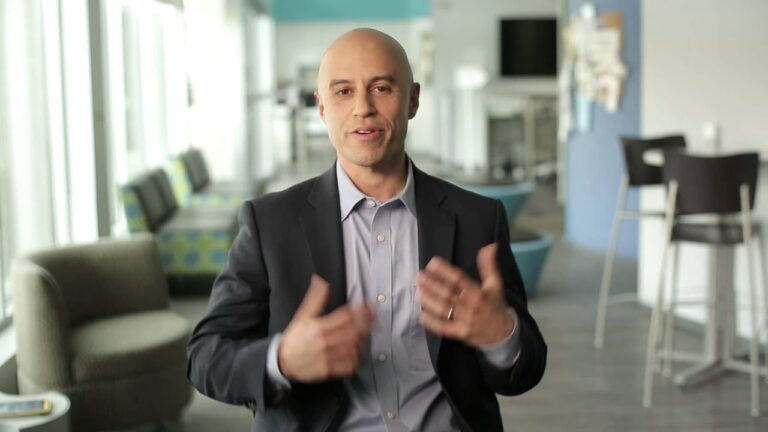Patient Choices in the Used Car Lot of Healthcare

Guest essay by Chris Oldenburg [with editor’s comments at the end]
In America we love our choices. Drive by any car lot and you might see 10 models that only differ in exterior color. We also love simplicity and service. Those cars had better have a clear cost taped to the windshield right next to a list of what’s included.
Our healthcare system is increasingly becoming a vast car lot where it turns out only some of the cars are for sale, for only some of the people, some of the time. And good luck finding a clear cost or any kind of spec sheet. The older we get as patients, often the more healthcare we need. But those vast lots don’t get easier to search, the prices aren’t more transparent, and the value doesn’t inherently increase with our ages.
We need the kind of healthcare system where not only is the price clearly painted on the glass, but the spec sheets include a real list of what we are getting with our care. And we get to choose from more than just one model. Until those “wants” are magically presented to us, we have to get real and get working – our health, our wallets, and our sanity depend on our abilities to learn to react to healthcare in new ways.
Trust the Humans
When we think of the frustrations with current healthcare, these often circulate around non-human elements. Money. Pre-authorization forms. Coding. Billing. Endless cycles of paperwork. We are losing the humans in healthcare. The doctors, nurses, and care coordinators who are the ones actually providing the care – the ones who entered their fields to give us care in the first place. Here’s what you can do:
- Ask your physicians where they go for care. Need a knee replacement? Find out who he or she would use as a surgeon. The recommendations of other physicians are some of our greatest, underutilized resources.
- Look at doctor driven technologies. Need any kind of surgery? Look at Surgeo, an online service that delivers surgery packages built around surgeons who are recommended and vetted by other surgeons. We’re also likely to see continuing innovations courtesy of Alphabet – the technology monster house formerly known as Google – as they delve deeper into the healthcare arena.
Demand Transparent Pricing
Transparent pricing is that mirage in the distance, and as patients we have to take steps to peel back the financial curtains. The reality is that we are consumers. Just like we shop for cars, houses, and groceries, we need to take the same proactive steps to shop for our healthcare.
- Call and ask ahead of time for a detailed account of what to expect financially. Not what your insurance policy will cover – but exactly how much you and your insurance will each be charged. The reality is that getting this information is challenging at best. But asking for it is your right and financial responsibility. Imagine if all patients called ahead of time to ask for price quotes. Changes would have to occur at organizational levels to answer those types of consumer demands.
- Call and verify the coding. Be ready to be put on hold, transferred, and then asked to leave a voicemail. But it can be worth it. I recently received a bill for $289 for a visit that lasted fewer than 3 minutes. I called and asked the billing department how it was coded – What did those doctor’s notes say that raised my typical $190 appointment by 30+%? They never would tell me how it was originally coded, only that after a second look someone else in Coding agreed it could “perhaps” be coded differently. The new bill I received was for $193. It took me fewer than 3 minutes on the phone. Well worth the almost $100 I saved.
Demand More
There are trends now that demonstrate a reaction to healthcare consumer needs. Some groups such as Priority Health are rewarding healthcare consumers who search for financially prudent healthcare options by offering rewards. The downside to this approach appears to be a lack of attention focused on quality of care and a hope that consumers will want those gas gift cards more than they will want to find the best physician. A bit too much like getting a reward to find an inexpensive car, but then realizing that it needs some engine work, but it is a step towards giving consumers some tools for financial transparency in healthcare.
The more we as consumers realize that the government is a long way from providing us with choices that help us today, the more we realize that we need to demand more. And don’t waste your time thinking that you’re too old, too technologically challenged, or too busy. A survey disclosed by the Institute for Healthcare Consumerism shows that millennials are no statistically different from the overall adult population when it comes to comparison shopping online for medical services. Age is not a significant barrier to accessing healthcare information.
The consumer healthcare lot can be an intimidating and confusing venue to navigate. But if we allow ourselves to be in the driver’s seat – demanding and making choices – we’re more likely to find solutions and less likely to drive away with a lemon.
About the Author
Chris Oldenburg is a mother, wife, eternal caregiver, and frustrated healthcare consumer who prefers to be the wrinkle in the status quo.
Editor’s Take on Patient Choices in the Used Car Lot of Healthcare
I’m especially grateful when people send articles based on their personal experiences and thank Chris for reaching out to share this. She gives me an opportunity to rant as well, and I urge you to add your own thoughts in the comments below.
The more I research and write about our complex healthcare system, the more I see the profit motive of free-market capitalism as a large part of the problem, even though it’s what promotes innovation and risk-taking. It’s why Americans pay twice as much as other advanced nations but still live sicker and die younger. Call it greed if you will, but it’s human nature for companies to first serve the investment interests of their shareholders; and until we adopt a universal healthcare system like Medicare-for-All or what other nations have, we’ll continue to pay more for worse outcomes.
Comparison-shopping by savvy consumers for the best value in care is only possible with price transparency and vibrant competition among alternative providers, and then only when it’s not an emergency and the patient is still conscious. We don’t pause the ambulance while we search online for the best trauma center value, now do we?
Obamacare introduced new competition among insurers, in exchange for a government mandate that everyone have insurance. The insurers can no longer cherry-pick the healthy clients and deny coverage for others, and 80% of their premiums must actually go to providing care. There are other requirements too, which have insurers working to change the model away from prepaid medical care and more toward insurance against devastating financial loss from catastrophic illness or injury. The low-cost, high-deductible policies are part of the strategy since they encourage consumers to make healthier lifestyle decisions and to comparison-shop when they can. To make shopping easier, the insurers are pressuring providers to make their prices more transparent up front. It’s been a slow transition, but it is working, at least for some people.
My wife and I now pay less than half of what we once paid for overall medical care (premiums plus copays), but my fear now is that out-of-pocket costs will cause people to avoid getting the care that they actually need. Again, it’s human nature, and it’s why I support universal healthcare.
Fixing a complex system is itself complex, but I remain guardedly optimistic that we’re on the right track and will get there eventually, because the economic and social benefits are so immense. Obamacare has flattened the cost curve, but we still spend about $3 trillion/year on healthcare. Since that’s twice what other nations pay, we theoretically should be able to cut that in half while simultaneously improving care quality and consumer satisfaction. But there’s one big obstacle, and that’s the corrupting influence of big money in politics.
As reported in Steven Brill’s excellent TIME Magazine special report, “Bitter Pill: Why Medical Bills are Killing Us,” the medical industrial complex (hospitals, insurers, drug companies, equipment providers, and testing companies) spend twice as much on political lobbying as the military industrial complex. It again is human nature, because these corporations don’t want to lose $1.5 trillion/year in revenue and must answer to shareholders, not voters. It doesn’t matter that the savings would quickly pay-down the national debt or that a healthier workforce is a more productive workforce that would improve GDP and global competitiveness.
I don’t see that changing dramatically as long as the Supreme Court’s Citizens United decision allows unlimited political spending, because a billion dollar election is a lot cheaper than the $1.5 trillion they want to avoid losing.

